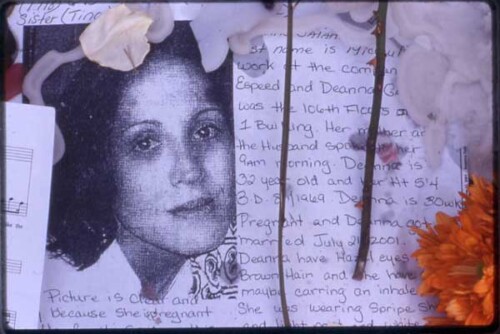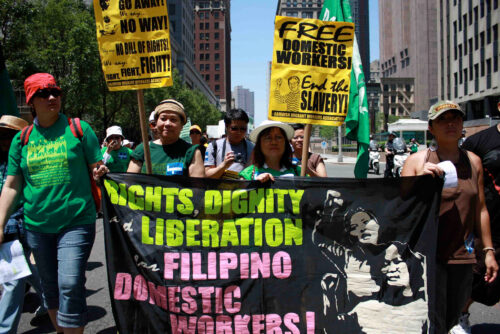Introduction
Brandeis High School was located on 84th Street in an area of Manhattan known as the Upper West Side. However, 84th Street was not always the Upper West Side. Historically, 84th Street and the area surrounding it were primarily comprised of low-income African American, Haitian, Latino, and White residents. Like so many other neighborhoods of New York City, as a result of multiple waves of gentrification, the area is now comprised of a percentage of affluent residents, the majority of whom are White. Amidst these neighborhood shifts, however, Brandeis continued to serve low-income students and students of color until 2009, when the New York City Department of Education (NYCDOE) decided that it was a failing school and slated it to be phased out, or closed.1
Brandeis was one of several large, comprehensive high schools in New York City. It was also the case study for Michelle Fine’s seminal Framing Dropouts.2 To a large extent, the conditions that Fine documented over twenty years ago have not considerably changed over time: Brandeis continued both to be under-resourced and to serve a student body that was predominantly low-income and Black and Latino.3 The school also served a large number of English language learners as well as students with special needs. Brandeis was among over 100 schools that were closed during Michael Bloomberg’s tenure as Mayor.4 In many ways, Brandeis is representative of a forgotten or abandoned place, which Ruth Wilson Gilmore describes as “planned concentrations or sinks—of hazardous materials and destructive practices that are in turn sources of group-differentiated vulnerabilities to premature death ….”5
During the phase out of Brandeis, as the students slowly disappeared, the question arose as to what should be built in the space. And it was during this time that Brandeis—or more precisely, the building that once housed Brandeis—transformed from being a place that was once forgotten and never sought after, to one that became fought over.
Several scholars have drawn upon David Harvey’s articulation of accumulation by dispossession to highlight the relationships between restructuring in education, the increasingly explicit role of market forces that permeate state-driven education reforms, and the gentrification of urban neighborhoods.6 Building upon the work of these scholars, we use historical and ethnographic methods to examine what the case of Brandeis might tell us about how the continued production of what Gilmore terms “group differentiated vulnerability to premature death”7 occurs in tandem through urban renewal and education reform.8
In the sections that follow, we trace state-driven education reforms and urban renewal programs that moved through Brandeis and through the Upper West Side over the course of several decades. We begin with an examination of how the education reforms that claimed to fix Brandeis only allowed for a continued dispossession. While these reforms ensured that the world inside Brandeis remained consistent over time, the world outside the building was changing rapidly. We chart how urban renewal programs for the Upper West Side facilitated a gradually increasing disjuncture between the school and its surrounding community. Finally, we interrogate the cultural logic that undergirded the negotiation of this disjuncture during what we term the postmortem period of Brandeis phase out.9
A History of Reform
In this section we use Brandeis to examine the contradictory dimensions of decades of state-driven education reforms. By tracing these reforms as they were implemented at Brandeis, we hope to demonstrate that the current crisis in education is neither a new nor an accidental phenomenon. Rather, the very same reforms that claimed to fix so-called failing schools like Brandeis only ensured a slow and steady, yet aggressive dispossession.
The official discourse of education reform over the past four decades might best be described as variations on a theme, and can be traced back to the 1983 report A Nation at Risk: The Imperative for Education Reform, issued by the Reagan Administration’s National Commission on Educational Excellence.10 The report arrived on the heels of the 1970s fiscal crisis. By 1982, the year preceding the report’s publication, unemployment had reached 10.8 percent nationally, and in 1980, inflation had hit 13.5 percent as a yearly average, the highest it had been since 1947.11 As noted by Michael W. Apple, during this time education became a key dumping ground through which these realities were explained and rationalized.12 Indeed, a major claim made by the report stated that the “rising tide of mediocrity that threatens our very future as a Nation and a people” was due to a failing education system that could be fixed through reforms that focused on four key areas, central among which was the development of uniform and measurable standards.13
Standards were presented as an appeal to excellence and to the promise of meritocracy offered by the dominant narrative of public education as the “great equalizer.”14 One of the primary ways standards were to be measured was through the implementation of high-stakes tests, an instrument for student evaluation that are termed as such due to their role in determining specific consequences for students, including promotion in grade levels.15 Coupled with calls for standards and accountability were debates over the role of the state, and specifically the federal government, in education. In the years following A Nation at Risk, presidential administrations would shape the rise of what has come to be termed the “accountability regime.” This regime grew considerably during the Clinton years, as a result of the Goals 2000 program, which focused on accountability and allowed states to design their own academic standards and tests.16 Goals 2000 would ultimately not create new mandates, but was considered a watershed moment in which there was, as Patrick J. McGuinn suggests, a “fundamental break with the historical federal education focus on promoting access and equity for disadvantaged groups and initiated a new era in which the federal government would emphasize academic improvement for all students.”17 The “accountability regime” then, marked a shift to measurement, metrics, punitive consequences for “failure.”
The George W. Bush administration’s No Child Left Behind Act, and its accompanying calls for testing and funding tied to accountability (promoted by Goals 2000), was integral to the solidification of the accountability regime. No Child Left Behind (NCLB) made high-stakes tests mandatory for all public school students in grades three through eight.18 NCLB also expanded the range of those impacted by these tests to include individual school workers as well as entire school communities.19 Advocates of NCLB echoed the rationale for reform advanced by A Nation at Risk and identified public education as a major culprit that was to blame for societal problems. Significantly, race and class were particularly highlighted by the Bush administration’s official discourse on NCLB, and the administration promised to close the achievement gap for low-income students and students of color by increasing accountability from schools. The market-based ideology of standards and accountability put forth by A Nation at Risk and Goals 2000 was woven through the policy guidelines and mechanisms of NCLB. For example, provisions included in NCLB allowed for testing to emerge as the single instrument of assessment of student progress; teachers at schools that failed to demonstrate improvement (or Adequate Yearly Progress) could be fired, and schools could be closed.
Despite the rhetoric surrounding these reforms—of providing equal opportunity and greater accountability—the combination of uniform standards and high-stakes tests have instead increased inequities in educational achievement, access, and outcomes.20 This contradiction has been particularly pronounced in New York City, where in 2002 Mayor Michael Bloomberg introduced the Children First initiative, which, among other measures, re-centralized the nation’s largest school system.21 Within this reconfiguration of governance, the Bloomberg administration made significant use of NCLB provisions to utilize test scores to aggressively penalize schools, such as Brandeis, that were deemed to be underperforming.
The NYCDOE’s decision to close Brandeis was accompanied by a decision that three small schools would be opened in the building. Brandeis’s student population, which began being phased out in 2009, would steadily be replaced by growing student populations at these new schools. Small schools is a term used to refer to an educational reform movement that started in the 1970s and was led by progressive educators who sought to disrupt the model of large, comprehensive high schools—like Brandeis—which they assessed to be representative of a factory style of schooling that only warehoused low-income students. As an alternative, they called for the creation of small, innovative schools that emphasized progressive pedagogy and curricula, building community within the school, and growing relationships among students, teachers, families, and the school’s surrounding community. Over the past decade, the Bill and Melinda Gates Foundation has identified small schools as a key prototype for investment, and as a result, small schools have rapidly expanded across the country. In their book Small Schools: Public School Reform Meets the Ownership Society, scholar-activists and veteran small-school advocates Michael and Susan Klonsky trace the ways that the small-schools movement has been hijacked within the context of restructuring ushered in by NCLB:
The launching of scores of new small and charter schools in Chicago cannot be understood apart from community economic redevelopment and the effort to make the city an important hub in the global economy …. Chicago’s small-schools movement was, from its inception, tied by many strings to the city’s redevelopment plans and therefore represented a collage of educational and political forces, including business and educational interests ….22
Among the small schools that opened in 2010, as Brandeis was being phased out, was Frank McCourt High School. According to news articles, Frank McCourt High School was “highly anticipated by middle and upper class families on the Upper West Side who want a selective school close to home.” It was also heavily supported by state and local officials who claimed it responded to a demand for a second “high performing” high school in the neighborhood.23 According to early documents announcing the school, admission to Frank McCourt was at first designed to be “selective,” where admissions criteria were largely dependent on students’ high test scores. However, as the result of organizing by social-justice groups, parents, and activists, admissions criteria was established that ensured that a significant percentage of students served by Frank McCourt would be similar in demographic characteristics to former Brandeis students, and that admissions to the school would be evaluated based on factors that extended beyond test scores.
While the Frank McCourt plan was interrupted, another plan for the building was soon introduced. Success Charter Network (SCN), a fast-growing New York City–based charter-school management company, proposed that a new elementary school—called Upper West Success Academy (UWS)—be opened in the Brandeis building.24 Over the last decade, an increasing number of federal, state, and local governments have promoted the establishment of charter schools, a trend hat has resulted in considerable and patterned growth in New York City as well as in Chicago and New Orleans. In these cities, as several have documented, high concentrations of charter schools are also often linked to processes of gentrification through similar alignments as those identified above by Klonsky and Klonsky.25 In New York City, charter schools often bid on portions of space within public-school buildings that are determined (by a panel appointed by the mayor) to be underutilized spatially either as the result of under-enrollment or when a school—like Brandeis—is being phased out and as a consequence, space is available.26
SCN’s 2010 bid on a portion of space within the Brandeis building was successful, and their expansion was embedded within yet another reform that claimed to fix public schools: the Race to the Top Fund (also known as the “education stimulus”), which was part of the Obama administration’s American Recovery and Reinvestment Act of 2009. Race to the Top (RTTT) allocated a $4.35 billion increase in federal funding for education. However, these monies were not evenly distributed among the states.27 Rather, states were required to compete against one another for funding. Further, similar in design to structural adjustment programs, RTTT linked needed funds to significant policy changes.28 According to RTTT guidelines, states were eligible to compete for funds as long as they were able to meet a set of requirements. For example, New York State was ineligible to apply to RTTT until it did away with particular provisions which limited the number of charter schools that could exist at one time, and which barred students’ test scores from determining teachers’ salaries. In order to be able to compete for funding, New York State raised the cap from 200 statewide charter schools to 460, and also did away with provisions that prevented merit-pay programs for teachers. Between 2010 and 2012, New York State received nearly $700 million from Race to the Top monies.29
As we will see, similar to the initial intention of Frank McCourt High School, UWS also billed itself as a solution to the failure of public education that Brandeis was supposed to represent. And getting rid of low income students of color was key to the particulars of the solution posed by UWS. But first, it is useful to look back to the history of urban renewal that produced Brandeis to begin with, which culminated in a situation where Brandeis’s Black and Brown students became an anomaly on the Upper West Side.
- “Phased out” is a term used to describe the multi-year process through which a school is closed down after the NYCDOE identifies it as failing and determines closure as the solution. [↩]
- Michelle Fine, Framing Dropouts: Notes on the Politics of an Urban Public High School (Albany: State University of New York Press, 1991). Fine used the pseudonym “Comprehensive High School” in her study. [↩]
- As Fine documented, only 20 percent of ninth graders made it to twelfth grade, and only 80 percent of that group graduated. According to Brandeis New York State Report Cards, the student population continued to maintain similar rates of retention and graduation. Between 2003 and 2009, Brandeis served between 98 and 99 percent students of color, with a free and reduced lunch population of approximately 71 percent and a LEP (Limited English Proficient) population of approximately 25 percent. New York State Department of Education, Comprehensive Information Report: Louis D. Brandeis High School. New York: New York State Department of Education, 2009. [↩]
- Micha Landau, “State Plans to Revise School Phase-out Process,” UFT.org, September 8, 2011. [↩]
- Ruth Wilson Gilmore, Golden Gulag: Prisons, Surplus, Crisis, and Opposition in Globalizing California (Berkeley: University of California Press, 2007), 35. [↩]
- See Kristen L. Buras, “Race, Charter Schools, and Conscious Capitalism: On the Spatial Politics of Whiteness as Property (and the Unconscionable Assault on Black New Orleans),” Harvard Educational Review 81.2 (2011): 296–331; K.N. Gulson and T.C. Pedroni, “Neoliberalism, Cities and Education in the Global South/North” Discourse: Studies in the Cultural Politics of Education 32.2 (2011): 165–169; Pauline Lipman, The New Political Economy of Urban Education Neoliberalism, Race, and the Right to the City (New York: Routledge, 2011); Pauline Lipman and David Hursh, “Renaissance 2010: The Reassertion of Ruling-Class Power through Neoliberal Policies in Chicago,” Policy Futures in Education 5.2 (2007): 160–178. David Harvey, The New Imperialism (New York: Oxford University Press, 2003), 158. Harvey describes accumulation by dispossession as the process by which “[a]ssets held by the state or in common were released into the market where over accumulating capital could invest in them, upgrade them, and speculate in them. New terrains for profitable activity were opened up… Once in motion, however, this movement created incredible pressures to find more and more arenas, either at home or abroad, where privatization might be achieved.” [↩]
- Gilmore, Golden Gulag, 28. [↩]
- Our sources include including news and multimedia archives and school documents as well as data from participant observation and informal interviews. [↩]
- In this piece, we trace the raced and classed dimensions of the cultural logic that emerged during the period of Brandeis phase out. However, it is important to note that gender is also critical to understanding how this logic was often articulated. On the one hand, the people who animated the forgotten place of Brandeis were low-income Black and Brown young men and women who were often imagined as both unworthy, “troubled,” or threatening. They experienced raced and gendered hostility and aggressive behaviors from people outside the school as well as school safety agents (SSA) inside the school. On the other hand, gender was articulated during the period of “fighting,” as the place of Brandeis was transformed to include an elementary school. During this period, mothers who occupied different race and class positions were laying claim to what they understood to be the rights of their children. For more on the latter, please see U. Aggarwal, “The Politics of Choice and the Structuring of Citizenship Post-Brown v. Board of Education,” Transforming Anthropology 22.2 (2014): 92–104. [↩]
- National Commission on Excellence in Education, A Nation at Risk: The Imperative for Educational Reform: A Report to the Nation and the Secretary of Education, United States Department of Education, 1983. [↩]
- US Department of Labor, Labor Force Statistics from the Current Population Survey, Bureau of Labor Statistics Data, October 15, 2011. [↩]
- Michael Apple, “Comparing Neo-Liberal Projects and Inequality in Education,” Comparative Education 37.4 (2001): 409–423. [↩]
- National Commission on Excellence in Education, A Nation at Risk. [↩]
- See Apple, “Comparing Neo-Liberal Projects”; Sandra Jackson, “Commentary on the Rhetoric of Reform,” Education as Enforcement: The Militarization and Corporatization of Schools, ed. Kenneth J. Saltman and David Gabbard (New York: RoutledgeFalmer, 2003); Samuel Bowles and Herbert Gintis, Schooling in Capitalist America: Educational Reform and the Contradictions of Economic Life (New York: Basic Books, 1976). [↩]
- American Educational Research Association, “Position Statement on High-Stakes Testing,” www.aera.net, July 2000; Phil Gonring, Paul Teske, and Brad Jupp, Pay-for-Performance Teacher Compensation: An Inside View of Denver’s ProComp Plan (Cambridge, MA: Harvard Education Press, 2007). [↩]
- Patrick J. McGuinn, No Child Left Behind and the Transformation of Federal Education Policy, 1965–2005 (Lawrence, KS: University Press of Kansas, 2006); Diane Ravitch, The Death and Life of the Great American School System: How Testing and Choice Are Undermining Education (New York: Basic Books, 2010). [↩]
- McGuinn, No Child Left Behind, 91–92. [↩]
- NCLB is a reauthorization of the Elementary and Secondary Education Act of 1965. [↩]
- We use the term “school workers” from a more horizontal vantage point from which to describe the various individuals who are paid laborers within the context of the school building. This includes, though is not limited to, teachers, administrators, guidance counselors, school psychologists, physical and speech/language therapists, custodial services, health professionals, kitchen staff, and school safety officers. [↩]
- New York State ranks among the top states nationally that maximize the utilization and expansion of high-stakes testing. [↩]
- New York City’s public school system had been centralized until 1969 when, as the result of a long and multifaceted struggle (known as the movement for “Community Control” of schools), the city’s public schools were broken up to integrate New York City schools. Diane Ravitch, The Great School Wars: New York City, 1805–1973: A History of the Public Schools as Battlefields of Social Change. (NY: Basic Books, 1974). Richie Perez, “A Young Lord Remembers.” Jerald E. Podair, The Strike that Changed New York: Blacks, Whites, and the Ocean Hill-Brownsville Case. (New Haven: Yale University Press, 2004). [↩]
- Michael Klonsky and Susan Klonsky, Small Schools: Public School Reform Meets the Ownership Society (New York: Routledge, 2008), 37. [↩]
- Maura Walz, “UWS Parents and Politicos Took Central Role in McCourt’s Building,” Chalkbeat New York, November 13, 2009. [↩]
- Charter schools are publicly funded schools that have been freed from some of the rules, regulations, and statutes that apply to other public schools, in exchange for fulfilling certain accountability measures as set forth in the charter (National Education Association 2012). Charters have a complicated and contradictory history: while they were used as demonstrative projects by teachers and communities of color, many also argue that their roots can also be traced back to the segregation academies of the South. For a thorough overview and interrogation of charter schools and the contemporary charter school movement, see Michael Fabricant and Michelle Fine, The Changing Politics of Education: Privatization and the Dispossessed Lives Left Behind (Boulder: Paradigm Publishers, 2013). [↩]
- See Buras, “Race, Charter Schools, and Conscious Capitalism”; Lipman and Hursch, “Renaissance 2010”; Kenneth J. Saltman, Capitalizing on Disaster: Taking and Breaking Public Schools. (New York: Routledge, 2008). [↩]
- The ways the NYCDOE determines school utilization is a problem. It is not uncommon, for example, for the DOE to include janitors’ closets in their accounting of square footage. Based on these arbitrary calculations that do not take into account the particular needs of different students in a school, the NYCDOE often mis-determines a school to be under-utilized. [↩]
- Fabricant and Fine, The Changing Politics of Education. [↩]
- There are several definitions of structural adjustment programs. According to the Encyclopedia of Social and Cultural Anthropology, structural adjustment refers to “In development, a term used from the 1980s onward for a range of policies, strongly favoured (some would say imposed) by international agencies such as the World Bank and the International Monetary Fund, usually involving drastic reductions in state activity (e.g. welfare payments or subsidies on foodstuffs) and so-called ‘liberalization’ of free market activity” (Barnard and Spencer 2010, 623). [↩]
- The State of New York initially approved charter schools in 1998 and set the cap (or limit) at 100 charter schools across the state. In 2007, this number was increased to 200. Since 2010, when the cap increased to 460, the number of charter schools in New York City has steadily increased from 99 charter schools in the 2009–2010 school year (with 30,000 students served) to 136 charter schools in the 2011–2012 school year (serving 45,000 students). According to the NYCDOE’s Statistical Summaries, as of 2011, the student population in New York City public schools was 1,043,886 students (this number includes charter school students). These trends suggest that very soon, one out of every ten of New York City’s public school students will be attending a charter school. (See, for example, (NYC Charter School Center 2012). [↩]





